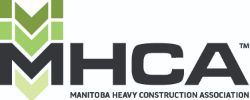CONCRETE SAFETY
Concrete is essential to infrastructure construction and repair but working with it carries risks.
Here are some helpful tips for workers
- Personal Protective Equipment (PPE) should be worn when working with or near concrete. This includes hard hats, hearing protection, protective eye wear or face shield, heavy duty gloves, high visibility apparel that covers the body to prevent contact, fit-tested respirators and steel toe boots.
- Be cautious of moving parts keeping hands, loose clothing, long hair and jewelry away.
- Ensure all workers are trained and competent in the operation and safety protocols for equipment. Use appropriate tools and equipment to handle and spread concrete.
- Be sure to wear fit test respiratory protection when cutting concrete or exposed to airborne silica dust. Long term exposure may lead to adverse health effects.
- Concrete contains chemicals that can cause burns. Wear long sleeves and pants to minimize skin contact. If contact occurs, wash the area immediately with water. Follow safety guidelines for curing compounds and avoid direct skin contact.
- Use proper signage and barricades to alert drivers and pedestrians of roadwork and potential hazards. This may include traffic control measures to keep vehicles away from the work area and protect workers.
- Formwork and shoring should be regularly inspected before and during the pouring of concrete.
- Remember those working outdoors need to keep hydrated and protected from heat stress and sun exposure.
- Ensure appropriate emergency procedures and first aid supplies are readily available on site.
By adhering to these guidelines and remaining vigilant, we can ensure a safer working environment for everyone. Your health and safety are paramount—let’s work together to keep our concrete job sites safe. For further information regarding concrete safety, you can find resources on our website www.mhcaworksafely.ca or you can speak to your regional safety advisor.


